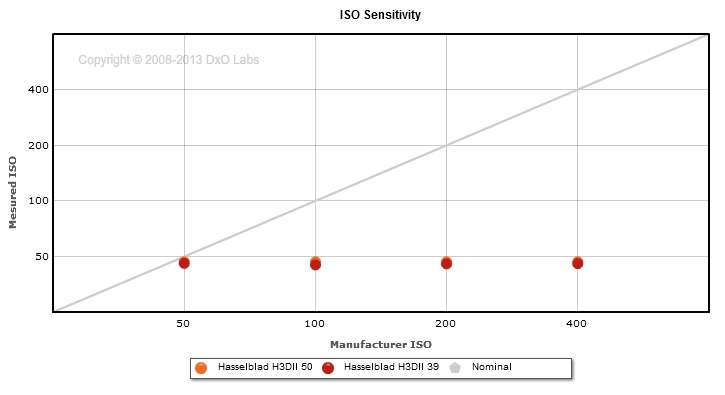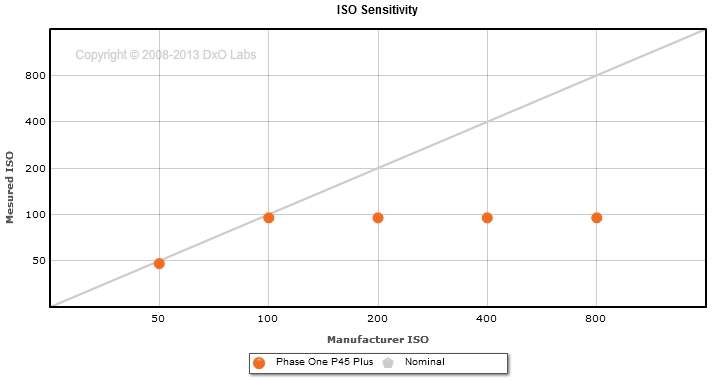I'm not sure which part of your post you are referring to, but I guess it is this? - "You can see that ISO 100 is the turning point so ISO 100 is called the native base ISO."
Ok, let's look at some other MFD backs. Here are two from Hasselblad. By your argument above, you would conclude that
these backs have no turning points so they have no native base ISO (!!), while I would conclude that the base ISO is clearly ISO 50 for both. Hasselblad users, which would you agree with?
Meanwhile, to further show just how malleable (arbitrary, meaningless, fake - take your pick) the above-base-ISO settings are in MFD CCD systems, let's compare two Phase One ISO curves, P45+ and P40+. These are both CCDs, 39MP and 40MP respectively, and both are from the "P+" generation of Phase One backs:
It's kind of funny how in one back, Phase One decided to initially track the nominal curve, then had a change of heart and went flat. In the other, they did the exact opposite - initially flat, then sloping!
Oh, and BTW, the P45+ uses the exact same KAF-39000 sensor as the H3DII-39 in the plot above. Same sensor, different ISO curve above ISO 50 - by your definition, they have different turning points (one has none at all!) so they have different base ISOs - but how can that be, as this is the same sensor??
The answer is that firstly, base ISO
is 50 for both, and secondly, the back manufacturers can do whatever they please above that base ISO, knowing that it won't make any difference - it's all just underexposure with crappier and crappier shadow detail. The smarter ones (like Hasselblad here) leave ISO as a pure flag, and in this way they at least maintain full (but shifted) DR through the complete ISO range.
Ray



